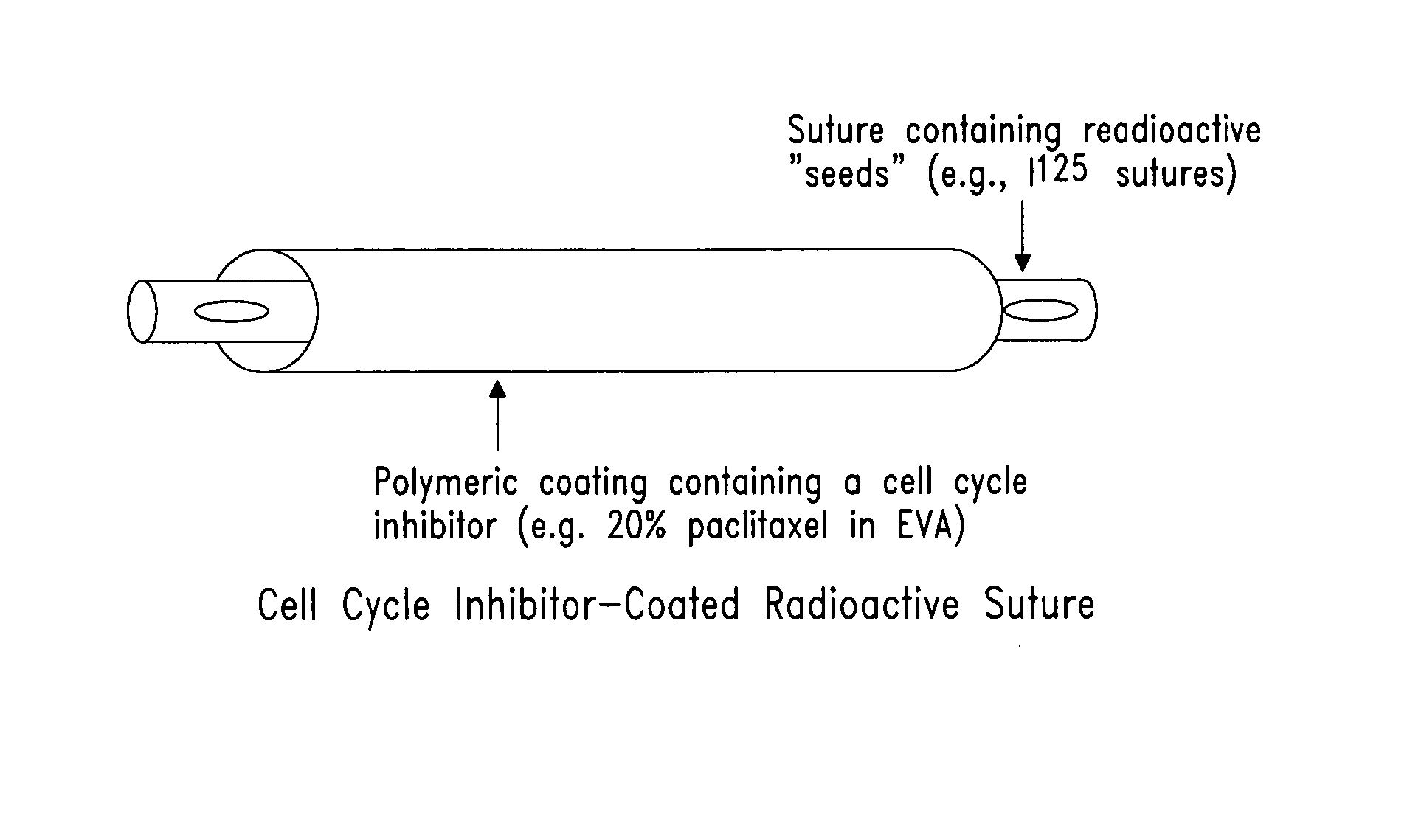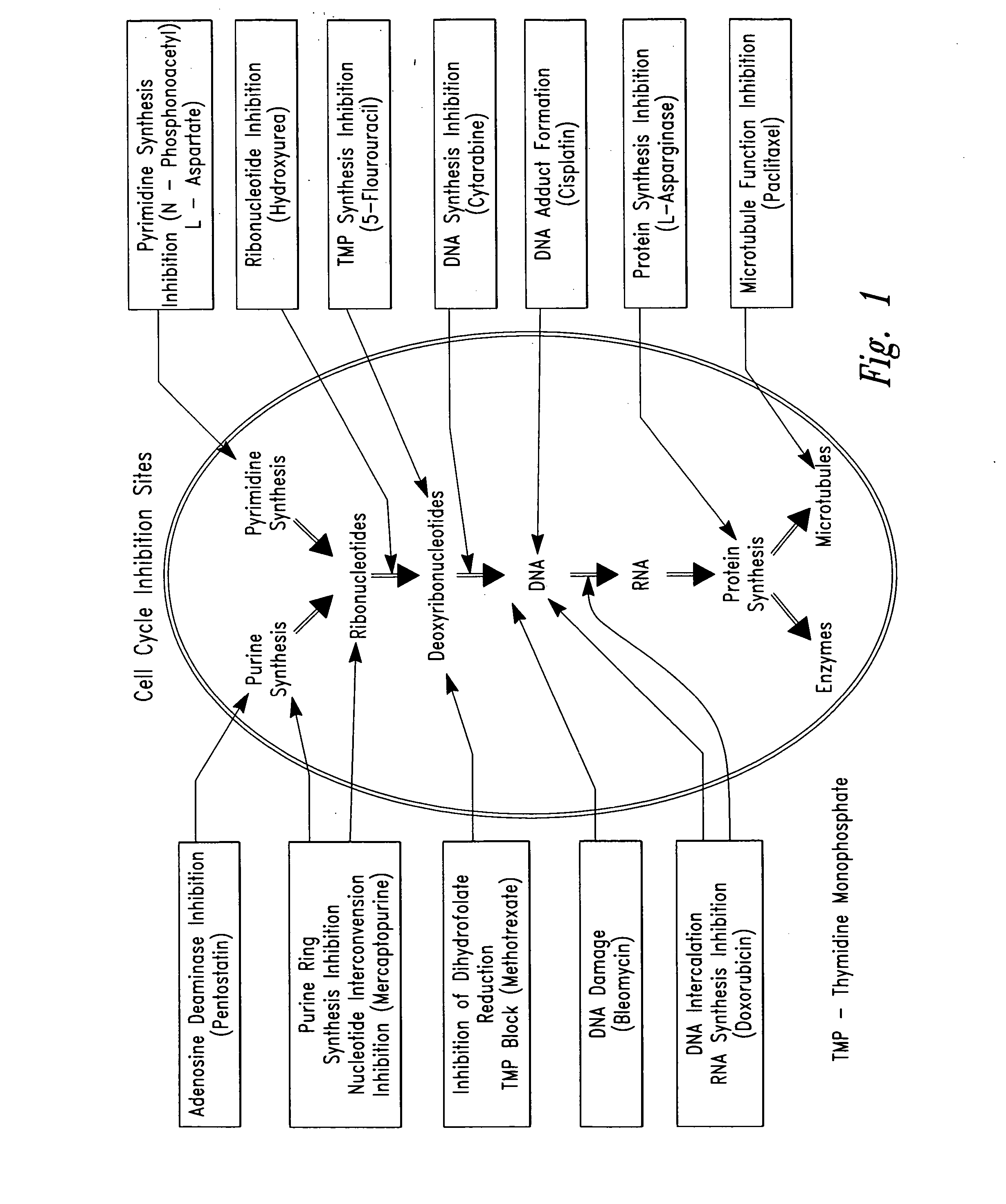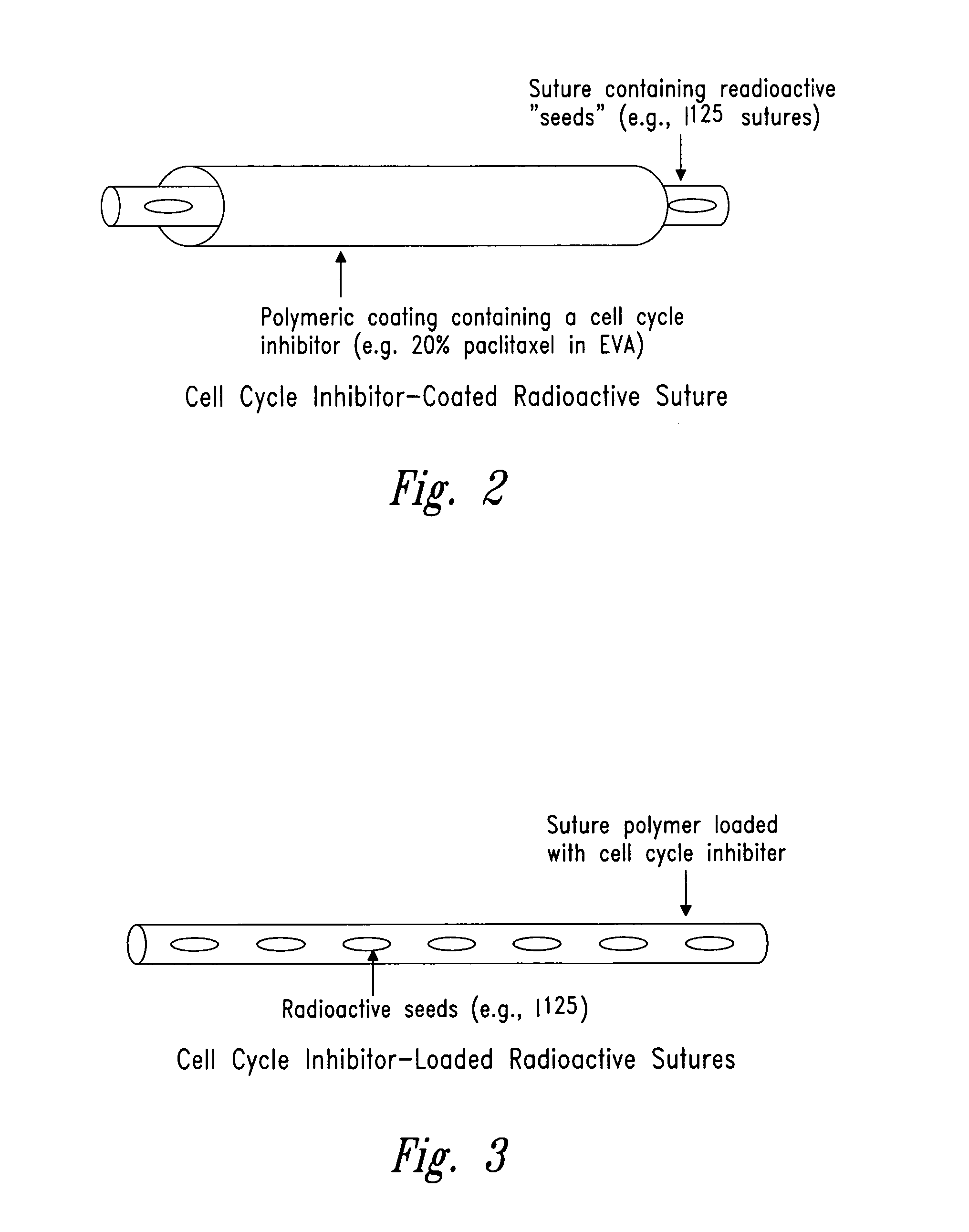Compositions and methods for treating disease utilizing a combination of radioactive therapy and cell-cycle inhibitors
- Summary
- Abstract
- Description
- Claims
- Application Information
AI Technical Summary
Benefits of technology
Problems solved by technology
Method used
Image
Examples
example 1
Fluorescence Activated Cell Sorting Analysis to Determine Cell Cycle Position
[0571] A. Univariate Analysis of Cellular DNA Content
[0572] Progression through S phase and completion of mitosis (cytokinesis) result in changes in cellular DNA content. The cells' position in the major phases (G0 / 1 versus S versus G2 / M) of the cycle, therefore can be estimated based on DNA content measurement.
[0573] To carry out the procedure, admix 0.2 ml of cell suspension (105 to 106 cells, either directly withdrawn from tissue culture or prefixed in suspension in 70% ethanol, then rinsed and suspended in buffered saline) with 2 ml staining solution. The staining solution consists of Triton X-100, 0.1% (v / v); MgCl2, 2 mM; NaCl, 0.1 M; PIPES buffer, 10 mM (pH 6.8); and 4′,6′-diamidino-2-phenylindone (DAPI), 1 μg / ml (2.85 μM) (final concentrations).
[0574] Transfer the sample to the flow cytometer and measure cell fluorescence. Maximum excitation of DAPI, bound to DNA, is at 359 nm and emission is at ...
example 2
Cell Cycle Inhibitor Determination Assay
[0584] Examples of human tumor cell lines that can be used for this assay include human melanoma, cervical carcinoma and astrocytoma. These cell lines can be cultured in slide flasks, 60 mm dishes or 100 mm dishes. Asynchronously growing populations are plated out for 24 hours for attachment and growth, after which different concentration-time combinations of the drug may be used, followed by irradiation as appropriate. Mitotic cell accumulations and cellular morphology can be evaluated microscopically, with the fraction of cells cycling being monitored by bromodeoxyuridine (BrdUrd) uptake (5 μM) into DNA, fixation in situ and fluorescence examination of a fluorescein-tagged monoclonal antibody against BrdUrd-substituted DNA. Mitotic indices can be determined by counting 1000 cell samples and determining the proportion of rounded, chromatin-condensed mitotic cells in relation to all cells. Flow cytometry is then undertaken on propidium iodine...
example 3
Manufacture of Topical Formulations of Cell Cycle Inhibitors
[0588] Cell cycle inhibitors can be applied topically as a therapy in conjunction with locally administered radiation. Topical formulations of cell cycle inhibitors can be gels, creams, or ointments.
[0589] A: Gel Formulation
[0590] A topical gel was prepared as follows. A cell cycle inhibitor (e.g., paclitaxel) was incorporated into the topical gel at a concentration of 1%. An active phase was produced by mixing 250 g ethoxydiglycol with 500 mg methylparaben and 250 mg propylparaben, while continuously stirring at 200 rpm. When all components were completely dissolved, 5 g of paclitaxel was added and mixed for an additional 20 minutes at 200 rpm. The mixture was covered with parafilm and set aside.
[0591] A gum phase was prepared by mixing 82.2 g of ethoxydiglycol with 7.5 g hydroxyethylcellulose. The cellulose was added slowly over a 5 minute period with stirring at 200 rpm. Once the hydroxyethylcellulose was added, the ...
PUM
 Login to View More
Login to View More Abstract
Description
Claims
Application Information
 Login to View More
Login to View More - R&D
- Intellectual Property
- Life Sciences
- Materials
- Tech Scout
- Unparalleled Data Quality
- Higher Quality Content
- 60% Fewer Hallucinations
Browse by: Latest US Patents, China's latest patents, Technical Efficacy Thesaurus, Application Domain, Technology Topic, Popular Technical Reports.
© 2025 PatSnap. All rights reserved.Legal|Privacy policy|Modern Slavery Act Transparency Statement|Sitemap|About US| Contact US: help@patsnap.com



